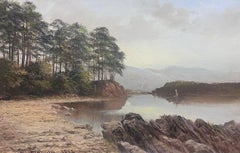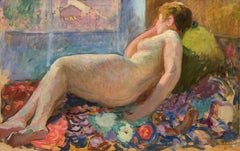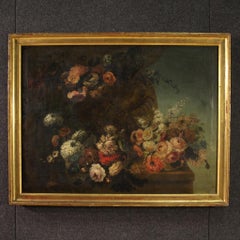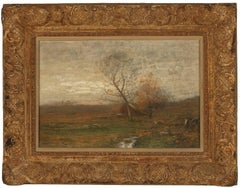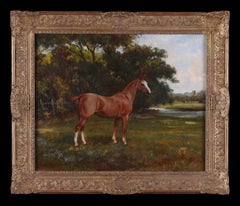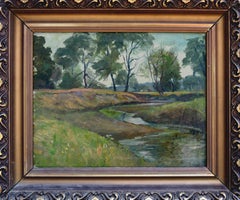Paintings
Early 1900s Victorian Paintings
Oil, Canvas
1920s Post-Impressionist Paintings
Canvas, Oil
1920s Paintings
Canvas, Oil
Early 1900s Tonalist Paintings
Canvas, Oil
Early 1900s Victorian Paintings
Oil
1920s Hudson River School Paintings
Canvas, Oil
1920s Impressionist Paintings
Oil
1920s Impressionist Paintings
Canvas, Oil
1920s French School Paintings
Gold Leaf
1920s Post-Impressionist Paintings
Oil, Board
Early 1900s Paintings
Oil
1920s Paintings
Oil
1920s American Modern Paintings
Oil
1920s Post-Impressionist Paintings
Oil
Early 1900s Impressionist Paintings
Oil
1920s Paintings
Oil
1920s Paintings
Canvas, Oil
1920s American Impressionist Paintings
Canvas, Oil
Early 1900s Impressionist Paintings
Canvas, Oil
Early 1900s Impressionist Paintings
Oil
1920s French School Paintings
Canvas, Oil
1920s Symbolist Paintings
Canvas, Oil
Early 1900s Impressionist Paintings
Oil
1920s Victorian Paintings
Canvas, Oil
Early 1900s Impressionist Paintings
Oil, Panel
1920s Baroque Paintings
Canvas, Oil
1920s Impressionist Paintings
Canvas, Oil
1920s American Impressionist Paintings
Linen, Oil
1920s Barbizon School Paintings
Board, Oil, Canvas
1920s Fauvist Paintings
Paper, Watercolor, Gouache
1920s Contemporary Paintings
Laid Paper, Drypoint, Etching
1920s Impressionist Paintings
Canvas, Oil
1920s Cubist Paintings
Gouache
Early 1900s Impressionist Paintings
Oil
Early 1900s Pre-Raphaelite Paintings
Canvas, Oil
1920s Art Deco Paintings
Canvas, Oil
Early 1900s Impressionist Paintings
Oil
Early 1900s Modern Paintings
Oil, Canvas
Early 1900s Symbolist Paintings
Oil
1920s American Impressionist Paintings
Oil, Linen
1920s Art Deco Paintings
Oil
1920s Surrealist Paintings
Canvas, Oil
1920s Impressionist Paintings
Oil, Cardboard
Early 1900s Impressionist Paintings
Oil
1920s Paintings
Canvas, Oil
Early 1900s Impressionist Paintings
Oil
1920s Paintings
Oil
Early 1900s Romantic Paintings
Canvas, Oil
Early 1900s Barbizon School Paintings
Oil
1920s Art Deco Paintings
Watercolor
1920s Paintings
Oil
Early 1900s American Impressionist Paintings
Linen, Oil
1920s Paintings
Oil
1920s Expressionist Paintings
Canvas, Oil
1920s Paintings
Oil
1920s Impressionist Paintings
Oil
1920s American Impressionist Paintings
Oil
1920s Paintings
Oil
Paintings for Sale: Shop Abstract Paintings, Landscape Paintings, Still-Life Paintings and Other Fine Art on 1stDibs
Painting is an art form that has spanned innumerable cultures, with artists using the medium to tell stories, explore and communicate ideas and express themselves. To bring abstract paintings, landscape paintings, still-life paintings and other original paintings into your home is to celebrate and share in the long tradition of this discipline.
When we look at paintings, particularly those that originated in the past, we learn about history, other cultures and countries of the world. Like every other work of art, paintings — whether they are contemporary creations or works that were made during the 19th century — can often help us clearly see and understand the world around us in a meaningful and interesting way.
Cave walls were the canvases for what were arguably the world’s first landscape paintings, which depict natural scenery through art. Portrait paintings and drawings, which, along with sculpture, were how someone’s appearance was recorded prior to the advent of photography, are at least as old as Ancient Egypt. In the Netherlands, landscapes were a major theme for painters as early as the 1500s. Later, artists in Greece, Rome and elsewhere created vast wall paintings to decorate stately homes, churches and tombs.
Today, creating a wall of art is a wonderful way to enhance your space, showcase beautiful pieces and tie an interior design together.
No matter your preference, whether you favor Post-Impressionist paintings, animal paintings, Surrealism, Pop art or another movement or specific period, arranging art on a blank wall allows you to evoke emotions in a room while also showing off your tastes and interests. A symmetrical wall arrangement may comprise a grid of four to six pieces or, for an odd number of works, a horizontal row. Asymmetrical arrangements, which may be small clusters of art or large, salon-style gallery walls, have a more collected and eclectic feel.
Download the 1stDibs app, which includes a handy “View on Wall” feature that allows you to see how a particular artwork will look on a particular wall, and read about how to arrange wall art. And if you’re searching for the perfect palette for your interior design project, what better place to turn than to the art world’s masters of color?
On 1stDibs, you’ll find an expansive collection of paintings and other fine art for your home or office. Browse abstract paintings, portrait paintings, paintings by emerging artists and more today.
Read More
Yale’s Treasure Trove of British Art Is Back on Public View in a Refreshed Louis Kahn Building
After a two-year closure, they Yale Center for British Art opens its doors again, with all sorts of changes to its building and programming.
At 89, Artist Lucio Pozzi Is Reaching New Career Heights
The Italian-American’s 2020 abstract painting “The Hoe” personifies his “art of not knowing.”
The 1stDibs Guide to Types of Abstract Art
Get to know the key movements and artists who have influenced visual culture for more than a century.
With a Show at MoMA, Marlon Mullen Paints Pictures That Are beyond Words
The nonspeaking California artist is having a moment, with vivacious paintings that play on art-magazine covers as well as more mysterious abstractions.
The Vibrant Beauty of Orphist Art Supersedes Its Perplexing Name
This kaleidoscopic early-modern art style has long deserved another look. Now, the Guggenheim museum is doing just that.
The 50 Most Expensive Paintings Ever Sold
Curious about the most expensive paintings in the world? Discover the stories behind these masterpieces as well as the staggering prices they fetched.
Ludwig Bemelmans Captures the Thrilling Sight of Coney Island at Night
The ‘Madeline’ creator and Carlyle Hotel legend was in a New York state of mind in the 1940s when he produced this exuberant and rare oil painting.
Art Brings the Drama in These Intriguing 1stDibs 50 Spaces
The world’s top designers explain how they display art to elicit the natural (and supernatural) energy of home interiors.
